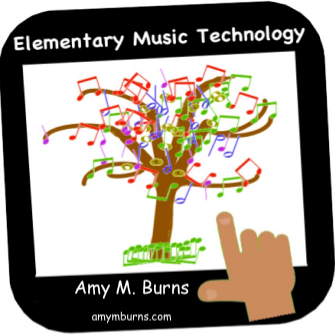Materials for an Early Childhood Family Music Class
Family Music Class: A Gift to Our Youngest Learners and Their Families
In 2015, I had the opportunity to bring my two daughters—then in preschool and first grade—into the school where I taught, Far Hills Country Day School. It sparked an idea that could help other teachers: why not offer a special music experience for our youngest learners and their families? I was inspired by Dr. Missy Strong, who created a Baby Music Class for young children, where they could explore music alongside their parents or caretakers.
What Is a Family Music Class?
This class is designed for the youngest of our learners, typically ages 3-12 months, 12-18 months, 18-24 months, ages 2-3, ages 3-4, and ages 4-5. Each session lasts around 45 minutes, making it manageable for both the children and the families.
When I started, I first invited faculty members with young children to attend after school. It was informal: I would teach 30 minutes after the school day ended, giving parents time to pick up their kids. We sang, moved to music, played instruments, and encouraged everyone to participate.
As this idea took off, I expanded it into a regular monthly program for the community, offering two classes: one for children 6-18 months, and one for 18 months-3 years. This program was supported by the school, which helped cover all the logistics. By 2019, I had created three separate classes due to the growing interest.
Though Covid temporarily halted the classes, we’ve successfully resumed since 2022, with a steady schedule on the second Monday of each month. I now have alumni who I taught when they were in my elementary music classes, bringing their babies to the class!
Logistics to Consider
If you’re thinking of offering something similar in your community, here are some key considerations:
Time of Day: Try to avoid scheduling during nap times.
Day of the Week: Mondays are ideal, as they offer families a structured start to the week.
Room Size: Ensure the room isn’t too small or overwhelming for young children.
Changing Area: Having a nearby bathroom with a changing station is essential.
Break Space: It’s helpful to have a quiet area, like a hallway, where families can take a break if their child gets overstimulated.
However, don’t hesitate to ask a parent for support if their child is becoming overwhelmed. A child who is unable to cope with the sounds and movement may impact the flow of the class, so it’s important to address this early to ensure a positive experience for everyone.
Fees and Payment
If you choose to run these classes as a paid program, consider looking at community centers, local YMCAs, or churches to host them. These organizations can often handle legal and insurance needs. You can also check what other programs are charging for similar classes to help set a price.
Encouraging Participation
Encourage family members to actively participate in the music-making process. One effective way is to incorporate music that they can easily access on Spotify or Apple Music to continue at home. Props like scarves, egg shakers, parachutes, hand drums, gathering drum, bean bags, stuffies, a PE ball, board books, possibly a projector if you need to project a book for all to see, and other items can help make the session interactive and fun!
Use call-and-response songs to foster interaction and keep the tone engaging, while discouraging chatting among parents so they stay involved with their child’s musical experience. A large teddy bear is a fun and easy tool to demonstrate activities and as your “baby” during lessons.
Suggested Routine for Family Music Class
Welcome: Start with welcoming music, board books, and shape drums before the class begins. When it is time to begin, you can clean up these items to use for later.
Hello Song: Have a fun way to learn the names of everyone present.
Fingerplays: Engaging hand motions and songs.
Simple Songs: These can be familiar songs, call-and-response songs, or other melodies to encourage singing.
Movement: Stand up and move to music. It can be with scarves or simple motions.
Clean Up Song: If you used scarves, have a clean-up song to assist with gathering the props. If a child does not want to let go of the prop, you can redirect or let them have the scarf because they will drop it eventually.
Instrument Exploration: Use the gathering drum or hand drums to sing simple songs or to add to ostinato rhythm patterns that you find in John The Rabbit or Hop Old Squirrel.
Shakers: Distribute egg shakers and encourage rhythmic movement.
Clean Up Song
"Move Its": Guide families through movements (bounces, turns, wiggles) with the help of props like a parachute using music with specific forms like Rondo form.
Songtale or Calming Song: End with a soothing song, either vocal or instrumental. You can also use a book as a visual aid to the song tale. I also like to play my flute during this part.
Goodbye Song
Materials to Help You Get Started
First Steps in Music for Infants and Toddlers by John M. Feierabend (GIA Music)
Music Together by Music Together LLC (Music Together Store)
Music for Kiddos by Stephanie Leavell (Music for Kiddos)
Laurie Berkner (Laurie Berkner Website)
Everyday Music Making for Babies by Connie Greenwood (GIA Music)
Final Thoughts
Introducing a Family Music Class not only gives back to your community but also provides families with the opportunity to bond through music. It’s an enriching experience for both children and adults. Whether you offer it for free or charge a fee, this is a wonderful way to build a musical foundation for our youngest learners while strengthening the sense of community within your school or local area.

